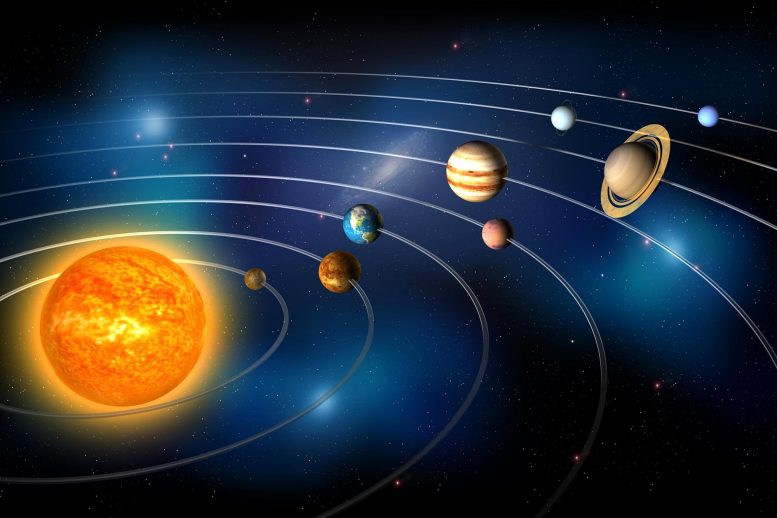
The James Webb Space Telescope aims to explore fundamental cosmic questions, focusing on our Solar System, exoplanets, and the lifecycle of stars. Webb will use its infrared capabilities to study the outer planets, delve into the atmospheres of various exoplanets to potentially uncover signs of life, and observe star formation from the protostellar stage to their explosive ends in supernovae.
The James Webb Space Telescope (Webb) is designed to answer fundamental questions about the Universe.
One of Webb’s key science goals is to study the nearby cosmos: uncovering hidden parts of our Solar System, peering inside dust clouds where stars and planetary systems are forming, and revealing the composition of exoplanets in more detail.
Unveiling Exoplanets
Thanks to its powerful capabilities at infrared wavelengths, Webb will offer a unique view of the outer planets in our own magnificent Solar System. Looking beyond, Webb will study in detail the atmospheres of a wide diversity of exoplanets.
Webb can study exoplanets as they pass in front of their respective host stars (known as transiting). The tiny fraction of light that passes through the atmosphere interacts with atoms and molecules there. That light then carries information about them, which scientists use to infer conditions such as temperature, chemical composition and formation history.
Webb will search for atmospheres similar to Earth’s, and for the signatures of key substances such as methane, water, oxygen, carbon dioxide, and complex organic molecules, in the exciting hope of finding the building blocks of life. In this way, Webb will complement ESA’s Ariel mission, a space telescope scheduled for launch in 2029 that will study what exoplanets are made of, how they form and how they evolve.
Investigating the Lifecycle of Stars
Webb will determine how and why clouds of dust and gas collapse into stars, or become gas giant planets or brown dwarfs. Observing in the infrared part of the spectrum, Webb will be capable of peering through the dusty envelopes around newly born stars, and its superb sensitivity will allow astronomers to directly investigate the faint, earliest stages of starbirth, known as ‘protostellar cores’.
Throughout their lifetimes, stars transform the Universe’s simple elements into heavier elements and spread them throughout the cosmos through stellar winds and supernova explosions, along with the precious heavy metals that enrich the cosmos to form new generations of stars.
Webb will study such supernova explosions, which are explosive deaths of massive stars and are among the most energetic events in the Universe. Webb will also study brown dwarfs: astronomical objects that are more massive than a planet but less massive than a star.
Webb is an international partnership between NASA, ESA, and the Canadian Space Agency (CSA).
13 Comments
What do these comments have to do with the article… they are ads.
Thank you, they have been deleted.
Last two comments are phishing scams
Thank you, they have been deleted.
Telescope 🔭 learning tool.
i’m curious as to how many planets will be found by the transiting technique, but what percentage of planets do not transit so that we can see them, and might be much closer than transiting ones? wobble catches some, but, many more…?
The Where is Webb page is a bit wonky now, but this morning the L2 insertion burn was finished, there was a press conference and if I open the generic page it is “fully deployed”.
Hopefully the final trajectory is the nominal L2 halo orbit.
Nasa got so close to learning the secret to the beginning .it looks like they will get close again.the simple elements are turned into heavier elements.well it lies going back the other way past simple.untill they reach the sperm and the egg.not time.but 0 becomes an entity.
Isn’t our solar system the bodies that orbit our own sun? The James Webb telescope will not explore our solar system! Embarrassing blunder.
I have no doubt that there is 12 planet circling our sun and soon or later the hidden planet s will be revealed
Solar system? Obviously, the author does not understand the difference between a solar system and a galaxy. The Webb Telescope was built to study our galaxy (as well as other galaxies), not our solar system.
If you don’t know your stuff don’t post it!
I thought this article was about uncovering hidden aspects of our solar system? Honestly this felt like a blatant attempt to just get views. There was nothing new and the entire article was just summarizing other, more comprehensive articles. Six paragraphs long. Do better.